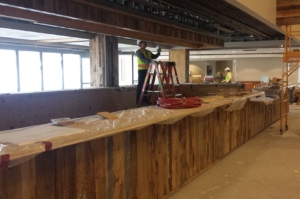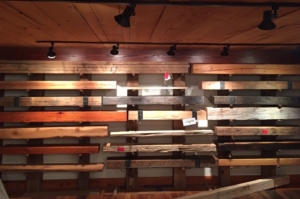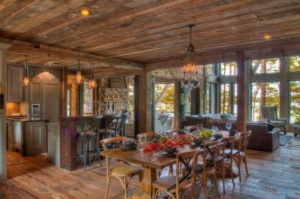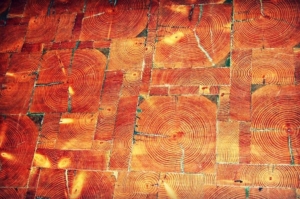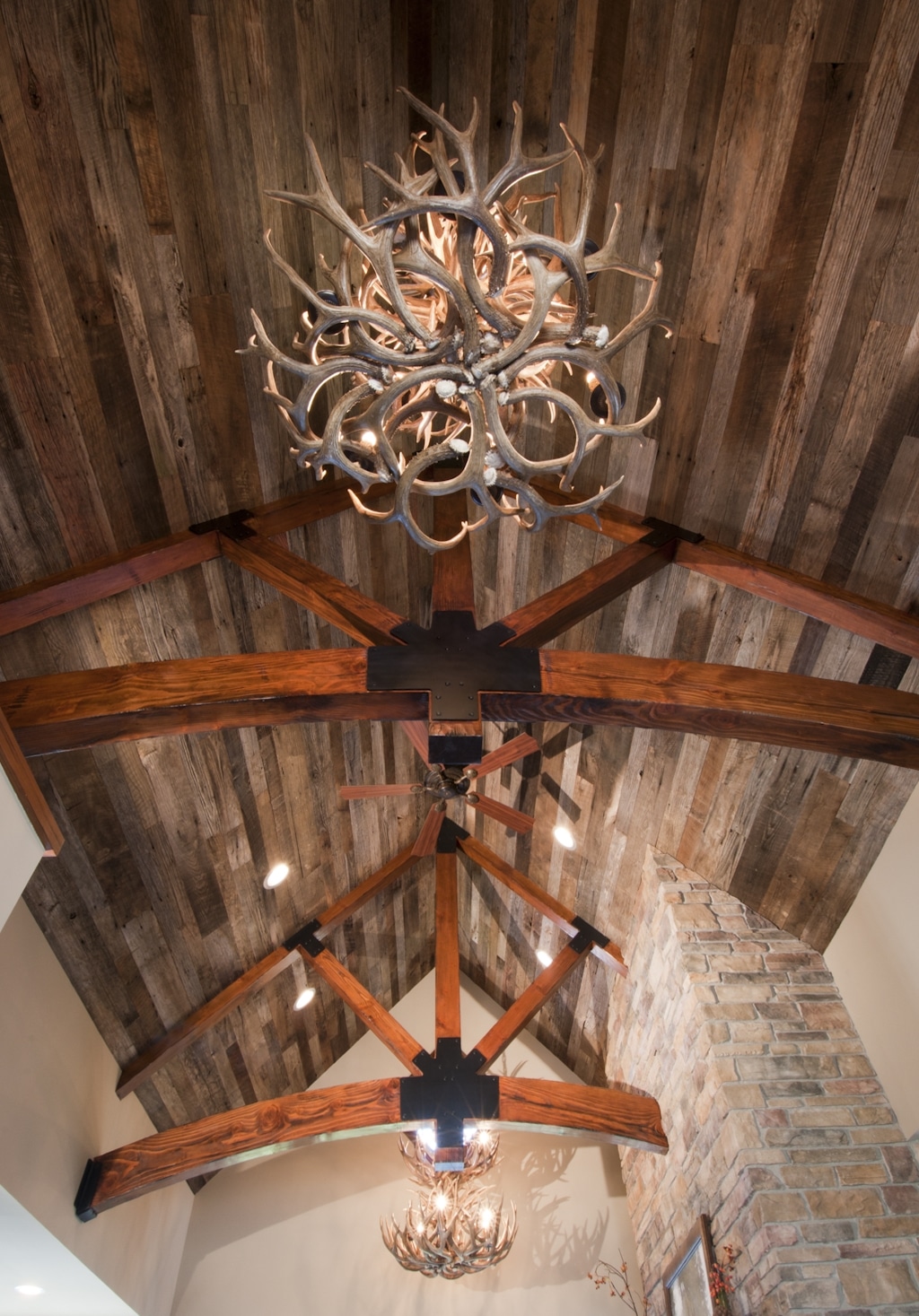
ABOUT RECLAIMED WOOD
Why Reclaimed Wood?
The endless old growth forests of North America have always been a rich treasure trove of natural resources, supplying its residents with some of the best hardwood building materials for ages. During the 18th and 19th centuries, the Industrial Revolution and western expansion led to a huge boom in building and manufacturing throughout the United States.
As bigger cities were building large factories and warehouses, homesteaders were spreading across the country, erecting farmhouses and barns everywhere they went, and the thing they all needed was wood. Not only were the massive quantities of hardwoods convenient, they were a sturdy building block that could stand up to harsh weather, industrial stress, and the test of time.
MAKING THE OLD NEW AGAIN
Even centuries later, we can still find the old timbers from this era in abandoned barns and buildings throughout the country and make new use of them. Through our detailed process of reclaiming Industrial Revolution era wood, we are able to bring new life to old materials, readying them for installation in modern buildings all around the Midwest. After we are finished with our salvaging, the reclaimed timbers and planks we deliver look even better than when they were fresh cut.
Remilling brings a clean, finished look, while the natural patina from years of aging adds a unique layer of history and unrivalled character to our reclaimed wood that can’t be matched in new lumber. The incredible detail that comes with reclaimed wood makes it a versatile and eye-catching material with even the more subtle varieties showing marks of antique milling techniques and old industrial tools.
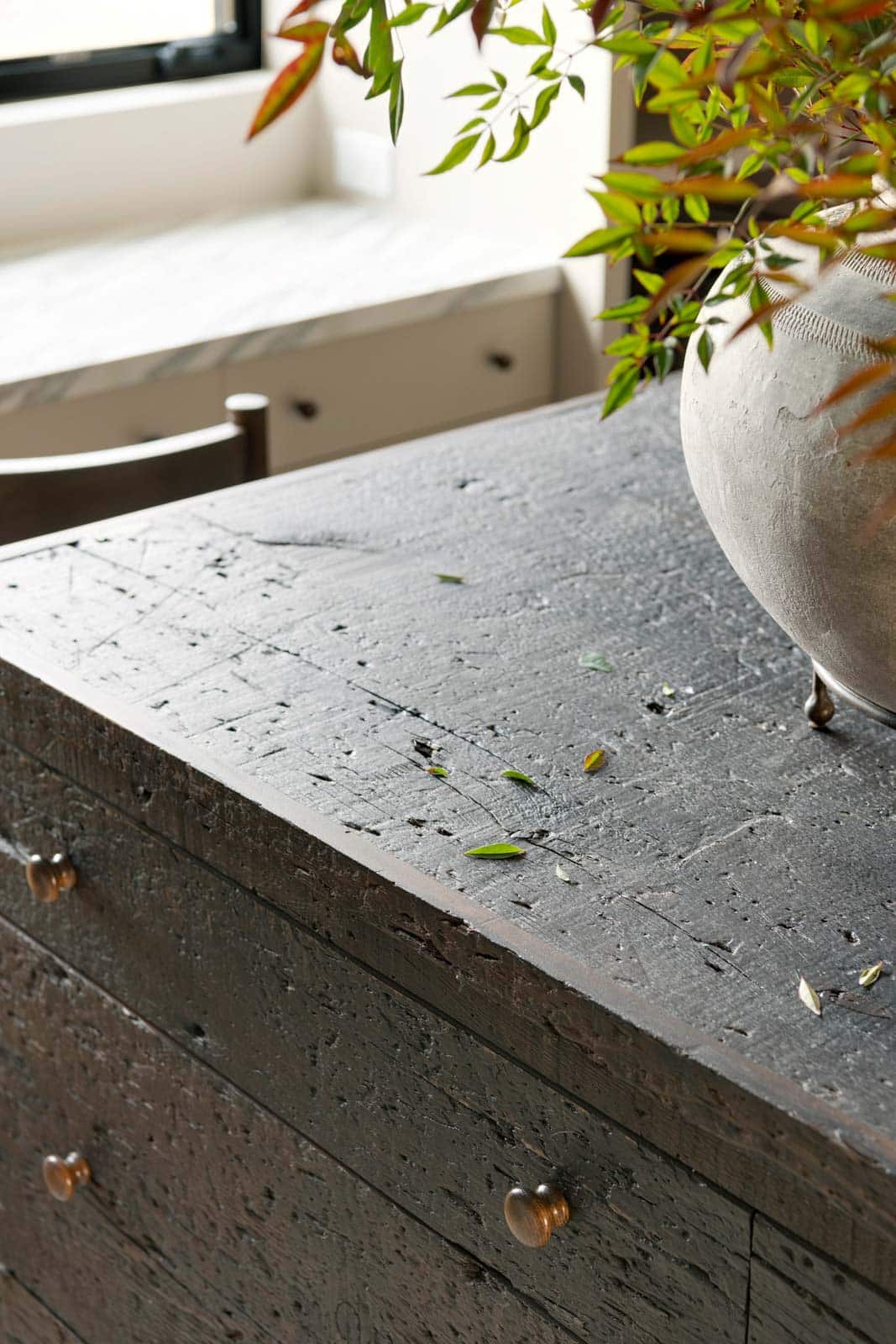

RECLAIMED WOOD PERFORMS AS WELL AS IT LOOKS
The trees of the 18th and 19th centuries looked a lot different than those cultivated for modern forestry. They were what we call “old growth” forests, where the trees took their time maturing over one to two hundred years. Compared to modern forestry trees that grow over the span of ten to twenty years, the resulting wood has very different properties.
With tighter rings and more dense growth patterns, this old wood far outperforms any new growth lumber or composite options in sturdiness, hardness, and even rot resistance. It’s not just by chance that these old timbers are still around for us to use two hundred years after they were harvested. With proper preparation and maintenance, our reclaimed timbers might last another two hundred more.
RECLAIMED WOOD IS KEY TO SUSTAINABLE BUILDING
With all of the great properties of old growth wood, it seems like a clear choice to use it as much as possible. There are more old growth forests to supply new stock, but depleting them would be catastrophic for our ecosystems. Reclaiming antique woods from old barns and warehouses is a sustainable solution to build with the best materials available. Not only does reclaimed wood save us from depleting our old growth forests, it also relieves some pressure from new plantations as well.
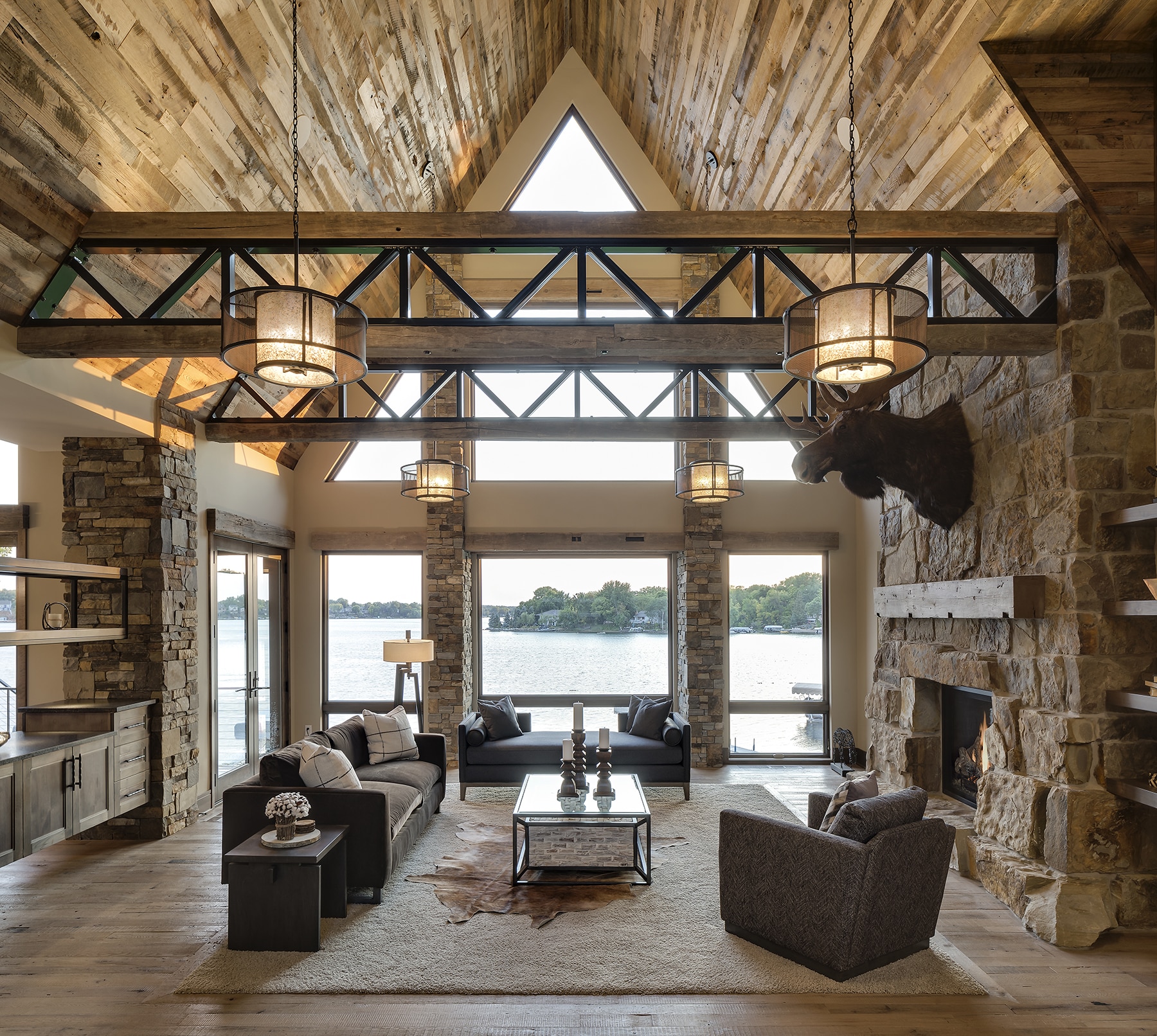
Ideas and Inspiration
4 Beautiful Ways to Use Wood Paneling for Walls in Your Home
When it comes to creating a home that feels both timeless and full of character, there are very few design elements that can compete with wood paneling for walls. Whether you’re looking to add rustic charm or modern minimalism to your space, reclaimed wood paneling brings natural warmth and texture…
5 Ancient Wood Craft Marvels That Teach Us About Building for the Future
When we think of ancient buildings, stone often steals the spotlight, but wood craft has preserved some of history’s true marvels. These ancient buildings use wood craft as more than decoration, they are engineering genius, artistry, and durability woven together. From split oak trunks to massive timber beams, these ancient…
Want a Cozy Interior Design? Science Says This 1 Natural Material Is the Ultimate Secret
It’s no secret that making a home is just as much about your heart as it is about your head. The feeling you get when you're back from work, school, or a vacation should be one of comfort and relaxation. The materials we use to build a home are just…
5 Powerful Reclaimed Wood Stair Design Ideas
When it comes to stair design ideas, reclaimed wood offers a timeless way to combine function and beauty. A beautifully built staircase not only provides a connection between levels, but it can become a centerpiece that sets the tone for an entire home. At Manomin Resawn Timbers, we believe that…
Reclaimed Wood Fireplace Mantels With Huge Design Impact
A fireplace mantel is more than just a shelf above the fire. It is the visual anchor of a room, the feature that commands attention and frames the heart of the home. Because the mantel is such a strong focal point, it has to carry character. A mantel should have…
9 Reclaimed Wood Accent Wall Designs for Huge Impact
Every home deserves a moment of surprise, and an accent wall is one of the simplest ways to achieve it. A reclaimed wood accent wall takes that idea further, combining natural history, texture, and warmth in a way no other material can match. Accent walls are about more than just…
MN Builder to Know: Highmark Builders Modern Rustic Luxury
Every home has a story to tell, and some stories are written in stone and timber, in light-filled rooms and reclaimed textures. For Highmark Builders, one of Minnesota’s premier custom home builders, design is never just about square footage or finishes. It’s about creating places where families live their lives…
Types of Oak: Reclaimed Oak Woods For The Best Building
Many types of oak have been a cornerstone of building and design for centuries, cherished for both its durability and its beauty. Today, reclaimed oak wood allows us to experience the timeless appeal of this species in a way that honors its history while making it accessible for modern design.…
6 Home Wine Cellar Ideas To Take Advantage Of Reclaimed Wood
At Manomin Resawn Timbers, we’ve had the pleasure of contributing reclaimed wood to a number of custom wine cellar projects. Each design tells a story, blending our expert craftsmanship with the personal vision of the homeowners who commissioned them. Exploring wine cellar ideas is one of the most exciting ways…
Wood Texture: 6 Reclaimed Styles That Bring Depth to Design
In every reclaimed timber, we can look closely and find a story in the wood texture. At Manomin Resawn Timbers, we know that every one of our boards, beams, and timbers carries that unique legacy etched in its grain, color, and patina. Reclaimed wood adds beauty and depth to any…
Elm Wood: Beauty, Durability, and a Story of Survival
Elm wood carries an innate strength that shows resilience and time. At Manomin Resawn Timbers, we are proud to offer this rare and striking material, reclaimed from the past and ready to shine again. With its flowing grain patterns and warm tones, elm wood brings a natural elegance to any…
End Grain Wood Tile Flooring: An Excellent Pattern For Strength and Beauty
If you are searching for a truly unique option for your hardwood floors, end grain wood tile brings an extra level of detail and history that is unmatched by any other form we offer. At Manomin Resawn Timbers, we believe that the best materials tell a story, so let’s discover…
5 Box Beam Ceiling Features: Beauty and Craft Above It All
A box beam ceiling is a visually striking way to bring warmth, structure, and architectural interest into a space. Rather than being carved from a single timber, box beams are hollow, built from carefully joined planks to create the illusion of a solid wood beam. This approach allows for greater…
Douglas Fir Flooring: 4 Stunning Reclaimed Styles
Few woods are as instantly recognizable or as enduring as Douglas Fir flooring. With its rich reddish hue, straight grain, and unmatched strength-to-weight ratio, Douglas Fir has been a favorite among builders for centuries. From 19th-century warehouses to modern homes, this wood has shaped American architecture. Its durability and beauty…
Minnesota Custom Home Builder to Know: Werschay Homes
At Manomin Resawn Timbers, we’re proud to partner with builders who understand that a home is more than a structure, it’s a story. A space to live, gather, reflect, and grow. Werschay Homes exemplifies that philosophy. As a premier Minnesota custom home builder, they blend craftsmanship with creativity, tradition with…
Wood Milling: Transforming Salvage Wood into Timeless Craftsmanship
Every reclaimed board has a past—and at Manomin Resawn Timbers, that past is honored through precision, patience, and purpose. From towering timbers once held high in century-old factories to weathered planks that lined forgotten barns, each piece begins a new journey the moment it enters our shop. At the heart…
Understanding Wood Patina: A Finely Aged Aesthetic
At Manomin Resawn Timbers, we believe there’s something truly special about the weathered beauty of reclaimed wood with its story woven into every grain and groove over more than a century. Our wood, salvaged from structures dating back to the Industrial Revolution, carries a rich history that modern materials simply…
Captivating Reclaimed Wood Siding Adds Rich Character To Your Home
There’s something undeniably captivating about the weathered texture and rich character of reclaimed wood siding. It carries the stories of the past—of old barns, historic buildings, and timeworn craftsmanship—while offering homeowners and builders a sustainable, high-quality material that’s built to last. At Manomin Resawn Timbers, we specialize in transforming these…
Luxury Home Design With Ruby + Suede Design Studio
We’re thrilled to spotlight another one of our talented Minnesota design partners who knows how to make reclaimed wood truly shine! This month, we’re featuring the exceptional work of Ruby + Suede, a full-service interior design studio based in Savage, MN. With so many gifted luxury home design professionals across…
Reclaimed Exterior Wood Siding Blends Into This Exquisite Modern Vernacular Home
At Manomin Resawn Timbers we love seeing the fruits of our labor as our reclaimed wood finds its way into a variety of beautiful projects. This month we wanted to take a look at this stunning luxury prairie home clad in rustic reclaimed exterior wood siding. Sitting on 90 acres…
Sustainable Wood: Why Reclaimed Is Your Best Option
In the world of homebuilding and remodeling, wood is an important resource - building everything from the frames and floors of your home to the finishing touches on your cabinets and built-ins. With such a high demand for this precious material, it’s pertinent to ask ourselves: is wood sustainable? The…
Rare Wormy Chestnut Wood That Survived The Blight
As dealers of reclaimed wood, we at Manomin Resawn Timbers get to see some pretty unique materials go through our doors. One of our absolute favorites for both its stunning appearance and rich history is the very rare Antique Wormy Chestnut. Due to the near extinction of the once abundant…
Shou Sugi Ban Wood: Everything You Need to Know
What is Shou Sugi Ban Wood? Shou Sugi Ban, also known as Yakisugi, is an ancient Japanese technique for preserving wood by charring its surface with fire. This method originated in Japan during the 18th century and gained popularity for its unique ability to enhance the durability and longevity of…
Minnesota Home Builders To Know: Zehnder Homes
We are excited to feature another one of our fantastic Minnesota Home Builders to Know! This month we are shining the spotlight on the gorgeous builds of Zehnder Homes. With so many talented luxury homes builders in the state, we are happy to single out some of the best Minnesota…
6 Captivating Reclaimed Wood Paneling Ideas
Reclaimed wood paneling is more than just a design choice - it’s a way to bring warmth, history, and charm into your home. Each piece of reclaimed wood that we create at Manomin Resawn Timbers carries a unique story, etched into its grain and texture by time. The aesthetic character…
Reclaimed Wood Box Beams Make A Big Statement
There’s something undeniably captivating about the timeless charm of reclaimed wood. Incorporating it into your home brings character, warmth, and a sense of history that is especially welcome in any rustic Minnesota home. When it comes to making a bold yet elegant statement, few features have the impact of reclaimed…
Minnesota Luxury Home Builder to Know: Nor-Son Custom Builders
We are back with another Minnesota Builder to Know! This month we are featuring the gorgeous luxury homes of Nor-Son Custom Builders. With plenty of amazing custom home builders in the state, we are happy to put the spotlight on some of the best Minnesota contractors who are using stunning…
Why Old Growth Wood Outperforms New Timbers
Why Old Growth Wood Outperforms New Timbers From hardwood floors to built-in cabinets to the framing of your home, wood is a material that deserves a lot of talk in the building world. Some of the more common conversations will regard what species of wood to use for various applications…
Discover Gorgeous Custom Reclaimed Wood Furniture From Manomin
There’s no doubt as to the allure of antique furniture with its weathered surfaces and depth of character. There’s a reason die-hards and casual enthusiasts will spend entire weekends perusing the endless aisles of antique shops all over the country. But, there are some drawbacks to these attractive pieces that…
Reclaimed Hardwood Flooring That Will Make You Rethink Your Carpet
When it comes to designing a space that reflects timeless beauty, practicality, and environmental mindfulness, the flooring you choose plays a pivotal role. As the largest surface area in your home, the floors you choose stand to have a huge impact on its overall design and functionality. While carpets have…
5 Reasons Why You Should Build a Reclaimed Wood Bar
Crafting a home bar is more than just creating a space to share drinks; it’s about building an experience, a centerpiece that tells a story. Building a reclaimed wood bar is not only a testament to sustainability but also a celebration of character and history. A beautiful bar top is…
A Modern Lodge of Reclaimed Wood with Katie Kottke Interiors and Wes Hanson Builders
Manomin Resawn Timbers is excited to see our beautiful weathered antique timbers lining the walls of yet another wonderful home from Wes Hanson Builders. This new build modern lodge on the stunning Gull Lake makes heavy use of reclaimed wood box beams and paneling to lend a rustic edge to…
Reclaimed Wood Design With Tays & Co and Wooddale Builders
In the Great White North, we all tend to feel a little more at home with a bit of nature indoors. Even in the colder winter months, the trappings of our summer getaways can make us feel just a little warmer. For any Minnesota luxury home builder, incorporating reclaimed wood…
5 Powerful Reclaimed Wood Mantel Ideas To Elevate Your Living Space
A fireplace remodel is a great way to refresh your living space and create a cozy, inviting atmosphere. As the centerpiece of a room, a fireplace naturally draws attention and sets the tone. Choosing a reclaimed wood mantel from Manomin Resawn Timbers can add an understated charm to your fireplace…
Two Reclaimed Woods You Should be Building with in 2024
Whether you’re building a new project or sprucing up an existing home, reclaimed wood should be at the top of your list of building materials. Our selection of beautiful antique hardwoods will contribute a timeless aesthetic to your home. Discover why white oak and weathered antique are the top reclaimed…
5 Living Room Decorative Beam Ideas with Reclaimed Wood
Have you never thought about what makes the difference between a regular old living space and a stunning room that leaves an impression? The living room is where you spend time with your family, relax after a long day, and entertain guests in the evening. If any room deserves to…
Reclaimed Wood Light Fixtures: Ambient and Accent Lighting
Light - the ever important puzzle of interior design. If you are working on a new living space and wrestling with the complexities of illumination, consider unique and exciting reclaimed wood light fixtures to brighten up your home. Custom chandeliers and accent lights made from antique timbers can be the…
Pillar Homes Featuring Manomin on Artisan Home Tour | Summer 2024
A Scenic European Estate by Pillar Homes at the Artisan Home Tour from Parade of Homes Manomin Resawn Timbers is delighted to see their enchanting, reclaimed wood box beams taking up residence in another stunning build from Wayzata-based custom home builder Pillar Homes. In the hands of such skilled craftsmen,…
5 DIY Projects to do at Home with Reclaimed Lumber
If you have a knack for woodworking, or are just looking for something to do with leftover planks from your recent remodel, reclaimed lumber can be a fantastic starting point for your next at home DIY projects. The natural beauty of antique lumber means that any way you apply it,…
Wood Mites: Everything You Need to Know
Wood mites are tiny white bugs often found on wood surfaces, and while they may seem insignificant due to their size, these pests can cause considerable issues. Despite being small, they can create a variety of problems if not properly managed, affecting the structural integrity of wooden items. In this…
Understanding Kiln-Dried Wood: The Essential Guide for Woodworkers
Have you ever wondered why kiln-dried wood is a staple in woodworking projects? This drying process is essential for achieving the perfect balance of moisture in wood, which is crucial for crafting durable and high-quality wood products. When wood is properly kiln-dried, it reduces the chances of warping, cracking, or…
Introducing the Minnetonka Man Cave by Great Northern Builders
I'm sure you've all heard of a man cave, but what about a man shed? The collaboration between Great Northern Builders and Manomin Resawn Timbers on the Minnetonka Man Shed project showcases the beauty and sustainability of reclaimed wood. Great Northern Builders took the lead in transforming this shed into…
A Reclaimed Custom-Built Home on the Lake
This custom-built home, nestled in the serene landscapes of Pequot Lakes, Minnesota, is a testament to the harmonious blend of artistry and craftsmanship. At the heart of its design lies a commitment to sustainability and timeless beauty, epitomized by the use of reclaimed wood provided by Manomin Resawn Timbers. Collaboratively…
3 Types of Reclaimed Wood Flooring to Consider for 2024
In the world of home design, few materials capture the imagination quite like reclaimed wood. This sustainable and stylish option is becoming a staple for custom home builders, interior designers, and homeowners alike. In 2024, reclaimed wood flooring is not just about aesthetics—it's about telling a story through your floors.…
10 Barnwood Wall Ideas
There is just something about using reclaimed barnwood in your home that creates a modern and classic feel at the same time. These barnwood wall ideas will help make your home unique and will also assist in making the interior of your home stand out. Not only do these walls…
How Reclaimed Wood is Made: From Barn to Beautiful
Have you ever thought about how reclaimed wood is made? Reclaimed wood is becoming more and more popular, giving homeowners, contractors, and builders a way to add history, quality, and sustainability to modern designs. In this post, we'll explain what reclaimed wood is, where it comes from, why it's known…
Discover the Charm and Benefits of Reclaimed Wood for Your Home Projects
Reclaimed wood is increasingly becoming a popular choice among homeowners, contractors, builders, and designers. With its unique charm and sustainable benefits, it's no surprise that many are turning to this eco-friendly material for their projects. However, people often have questions about reclaimed wood, its quality, cost, and other essential aspects.…
7 Surprising Ways to Use Reclaimed Wood
Reclaimed wood is exceptionally versatile, seamlessly blending with both traditional and modern home designs. In this blog post, we'll explore seven unexpected ways you can use reclaimed wood in your space. Beyond its suitability for floors, paneling, doors, and mantels, this eco-friendly material also adds a character to your project…
Reclaimed Wood in Outdoor Spaces
In this blog post, we’ll explore four different ways to incorporate reclaimed wood in outdoor spaces, ensuring your space is both functional and aesthetically pleasing. Creating a beautiful outdoor space is a dream for many homeowners. One of the most innovative and sustainable ways to enhance your outdoors is by…
The Curious Builder Podcast with Manomin Resawn Timbers
Last year, Manomin Resawn Timbers proudly sponsored The Curious Builder Podcast, a platform dedicated to exploring the intricate world of building, hosted by Mark D. Williams of Mark D. Williams Custom Homes. This blog post celebrates this collaboration, highlighting its significance for builders, clients, and enthusiasts of reclaimed wood. The…
Scandinavian Design with Reclaimed Wood
In recent years, Scandinavian design has gained popularity for its simplicity, functionality, and emphasis on natural materials. One of the key elements that define Scandinavian interiors is the use of wooden materials, which add warmth, texture, and a sense of natural beauty to spaces. At Manomin Resawn Timbers, we believe…
Crafting Timeless Pieces With Reclaimed Wood Tables
Reclaimed wood tables offer a stunning and sustainable way to infuse your Minnesota home with additional character and can make for a captivating conversation piece. Whether you're building a dining room table, an office desk, a bar, or an outdoor patio table, reclaimed wood offers textures and tones that new…
The 6 Best Wood Stains for Furniture
Wood stains are a staple for transforming furniture in DIY and home improvement projects. Whether you're an experienced woodworker or just starting your first project, choosing the best wood stain can be daunting. With a wide range of options available, it's essential to understand the different types of stains to…
Manomin’s Five-Stage Reclaiming Process
The phrase "reclaimed wood" is a buzzword in the industry, and today, we are talking about the reclaiming process. But have you ever wondered how an old, weathered piece of timber metamorphoses into a visually striking piece of reclaimed lumber? It's not just about the physical transformation but also a…
A Beginner’s Guide to Buying Reclaimed Wood
Buying reclaimed wood for your next DIY project or home remodel is a smart and stylish decision that offers sustainability and a visually timeless charm. Before you fully dive into the world of reclaimed wood, it's crucial to understand the ins and outs of this versatile material—what it is, where…
Amazing Reclaimed Wood Table Ideas
As homeowners increasingly prioritize eco-friendliness and timeless design in their dining spaces, reclaimed wood tables have become popular for adding warmth, character, and sustainability to any dining room. This guide explores five inspiring reclaimed wood table ideas to elevate your dining room’s aesthetic while minimizing environmental footprint. Why Should You…
Reclaimed Wood Versus New Wood
In today's world, environmental consciousness is rising. The choice between reclaimed and new wood has significant implications for green building. Let's explore the differences in sustainability between these two choices by examining their environmental impact, benefits, and drawbacks. When comparing reclaimed wood versus new wood, we uncover a nuanced narrative…
The Incredible History of Reclaimed Wood
Welcome to a journey through time, where the stories of reclaimed wood unfold like chapters within a rich historical narrative. Exploring the history of reclaimed wood unveils tales of craftsmanship, resilience, and character deeply ingrained in each piece. Reclaimed wood offers a glimpse into the past and adds comfort and…
5 Unique DIY Projects with Reclaimed Wood
Reclaimed wood has emerged as a favored medium for DIY project enthusiasts and interior designers in a world where sustainability and innovation merge. Its distinct appearance imbues any room with a sense of heritage and authenticity. For those aiming to enhance the visual appeal and functionality of their Minnesota home…
The Art of Blending Reclaimed Wood with Modern Decor
Being a hub of rustic charm and innovation, Minnesota provides the perfect backdrop for exploring the fusion of reclaimed wood with modern interior design. This guide delves into the nuanced art of seamlessly blending reclaimed wood with modern decor to evoke a rustic yet refined ambiance, offering insights and inspiration…
Elevating Your Home’s Exterior with Reclaimed Wood
When it comes to homes, Minnesotans understand the importance of creating a warm and inviting atmosphere while still reflecting their unique style. Incorporating reclaimed wood into your exterior design can transform your home from boring to majestic. Let's explore how reclaimed wood paneling, posts, siding, and trim can significantly elevate…
How to Easily Get Rid of Annoying Wood Mites in 7 Simple Steps
Having the stress of dealing with wood mites invading your home can be both frustrating and unsettling. These tiny pests can quickly multiply and become nuisances if not addressed promptly. However, with the right approach, you can eliminate wood mites from your living space and keep them away. In this…
Exploring Reclaimed Wood Finishes
Reclaimed wood has become a sought-after material in the interior design world through its rich history and weathered charm. One of the defining features of reclaimed wood is its unique reclaimed wood finishes, which can range from raw and rustic to refined and smooth. We'll delve into three diverse reclaimed…
Elevate Your Custom Home with Reclaimed Wood
In custom home construction, reclaimed wood embodies both beauty and sustainability which can elevate your space to new heights. If you're looking for ways to elevate your custom home with reclaimed wood then you have come to the right place! Reclaimed Wood Box Beams Crafted from reclaimed wood, box beams…
Embracing the Charm of Reclaimed Wood in Your Home
In interior design, the attraction of reclaimed wood is undeniable. The rustic charm of reclaimed wood, eco-friendly appeal, and unique character make it a popular choice for homeowners looking to infuse warmth and history into their living spaces. However, like any design choice, reclaimed wood has advantages and disadvantages. Here…
6 Facts You May Not Know About Reclaimed Wood
Today, we are here with six facts you may not know about reclaimed wood. With its rustic appeal and sustainable charm, reclaimed wood continues to captivate house design enthusiasts and eco-conscious homeowners alike. Beyond its well-known benefits, hidden facets of reclaimed wood add depth to its allure. Let's uncover six…
Sustainability and Style of Reclaimed Wood Flooring
What Makes Reclaimed Wood Flooring Special? Reclaimed wood flooring stands relevant today and has gained substantial popularity among interior designers and the home construction community over the past decade. Defined by its rich origins and unique character, reclaimed wood has achieved prominence as a choice that complements that lasting elegance…
The Unique Appeal of Hand-Hewn Timbers
Step into a world where craftsmanship meets history, where the rustic charm of the past converges with modern design. At Manomin Resawn Timbers, we invite you to discover the remarkable journey of hand-hewn timbers that date back to the 1800s. Join us as we explore these extraordinary wooden treasures' rich…
Top 6 Wood Stain Options for a Stunning Finish
Brown, clear, tinted, poly coating, clear coat– there are so many incredible wood stain options; how are you supposed to know where to start? Everyone has experienced that clueless feeling when walking down the paint and stain isles in a huge hardware store. But not after today's post. You can…
Reclaimed Wood Mantels: Bringing Nature’s Beauty Indoors
Are you ready to cozy up for the holidays and find the perfect spot to hang your stockings? Look no further than Manomin Resawn Timbers! Their fireplace reclaimed wood mantels, crafted from reclaimed wood, bring warmth and charm to any home, creating an inviting space for holiday memories. In this…
Reclaimed Wood Flooring for Your Home: Sustainability in Style
In an era where sustainability meets style, homeowners are increasingly turning to eco-friendly options to enhance their living spaces. One such choice that has gained significant popularity is reclaimed wood flooring. More than just a design trend, it's a conscious decision that combines elegance with environmental responsibility. In this blog…
Reclaimed Wood Flooring vs. New Hardwood
When it comes to flooring options, the choice between reclaimed wood and new hardwood can be both exciting and overwhelming. Each has its own unique charm, benefits, and considerations. In this post, we'll guide you through the journey of making an informed decision, exploring the distinctive features of reclaimed wood…
Reclaimed Timber Sources: Exploring Different Wood Species
Reclaimed timber, with its rich history and inherent character, has become a staple in eco-conscious interior design. However, the beauty of reclaimed wood goes beyond its weathered appearance; it lies in the diverse array of wood species that contribute to its uniqueness. In this blog post, we embark on a…
Manomin X Mercury
When Reclaimed Wood and Ceramic Tile Meet Hello, everyone, my name is Mercedes Austin, and I'm the owner of Mercury Mosaics. Initially, Manomin X Mercury was brought together through our entrepreneurial spirit. In addition, Sarah and I were part of many overlapping business circles. We mutually admired one another and always…
6 Reasons To Use Kiln Dried Wood: (Why It’s Superior To Standard Reclaimed Wood)
If you want to put reclaimed wood in your home, you may have heard of kiln-dried wood. Kiln drying transforms recycled lumber into beautiful, finished hardwood floors, paneling, mantels, and more. Below, we've explained what goes into making kiln-dried wood and outlined why you should only buy kiln-dried lumber. What is…
Timber Vs Wood: What’s The Difference? (Complete Guide)
Wood, timber, lumber... it's all just trees, right? Well, yes and no. Believe it or not, there's actually a difference in usage between timber and wood. While the average layman uses these terms interchangeably, we know a thing or two about timber and wood here at Manomin Resawn Timbers! When…
11 Decorative Ceiling Beam Ideas in 2022
Have you ever scoured Pinterest or Instagram or watched home design TV shows, wishing your home could look as striking and beautiful as other ones you see? It can be easy to think that you're doomed to have a boring interior if you don’t have a multi-million dollar home or…
Install a Reclaimed Wood Ceiling in 5 Easy Steps
So you want to install a reclaimed wood ceiling in your home? Today we're breaking down how to install a reclaimed wood ceiling in five easy steps! While it's not always a DIY-friendly process, if you have a little know-how and some help from Google and YouTube, you'll be able to…
How To Install A Barnwood Mantel (Design Tips + Pictures)
A unique Barnwood mantel is a perfect way to spruce up your space (no pun intended ?) by adding a stunning focal point that you can't find at a big box home improvement store. Whether you add your reclaimed wood mantel above a fireplace, in your front entryway, or above…
Rustic Wood Paneling: Complete Guide for Homeowners
Your home is full of details, features, and possessions that make it truly your home. Not only this, but your home is full of memories. And you want to feel like your home is an accurate representation of your personality so that you can keep making those memories. Take a…
How to Use Reclaimed Wood Planks for Walls
Some people were born with the interior design gene... and others were not. If you're doomed to always be rearranging items in your drab living room and scouring Pinterest for inspiration but never feeling like your home accurately reflects your personality, you may want to keep reading this article. Reclaimed…
7 Farmhouse Staircase Ideas Using Reclaimed Wood
Reclaimed wood can spruce up the look of any dwelling. However, if you want your home interior to resemble a farmhouse, a reclaimed wood staircase remodel is the way to go. Believe it or not, your stairs can rejuvenate the atmosphere of your entire space. But if you’re not sure…
How To Remove Hardwood Flooring (Step-By-Step Guide)
Removing a hardwood floor can be considered one of the most difficult home renovation tasks because it's tedious, time-consuming, and sometimes also expensive. That being said, if you know how to do it right, you can get through the process much more easily. Keep reading as we will be describing…
Reclaimed Wood Vinyl Plank Flooring: Cost, Benefits, & Style Options
Remodeling your home is an exciting time. You get to reimagine your living space in a new light— whether you're planning an extensive remodel or changing up smaller details like your cabinets or flooring. There are numerous options to choose from when you want new flooring, including: Carpet Real hardwood…
9 Best Wood Floor Stain Colors for Hardwood Flooring
Have you been staring at your hardwood floors, desperately wanting a change of scenery? Or maybe you've recently purchased a new house that needs a major facelift. You don't have to replace your entire flooring system to get the change you're desiring. Instead, you can opt to stain your hardwood…
Wide Plank Reclaimed Wood Flooring: Cost, Benefits, & Style Options
The country is full of synthetic vinyl furniture options. From desks and cabinets to flooring, many people want the cheapest and fastest option. However, if you're a homeowner that cares more about the environment and the longevity of the materials in your home, you may be looking for a more…
Mixed Hardwood Flooring: Style Guide for 2022
Classic wood flooring is featured in millions of homes worldwide, but another trend is taking the globe by storm: mixed hardwood flooring. This style guide explains exactly what mixed hardwood flooring is and provides practical ideas to incorporate it into your home. What Is Mixed Hardwood Flooring? In the past,…
How Much Does Hardwood Flooring Cost (2022 Guide)
The first step for homeowners who are thinking about refreshing their floors is to consider how much hardwood flooring costs to install. Hardwood flooring installation costs can vary based on various factors, so it's crucial to complete some initial research on hardwood flooring ranges and other requisite expenses associated with…
How To Salvage Reclaimed Pallet Wood for DIY Projects
The charming, rustic look of reclaimed wood and furniture made from pallets is all the rage right now. Whether you're turning on the television to the home improvement channel or leafing through the latest issue of your favorite interior design magazine, this trend is truly everywhere right now. With the…
What’s A Barnwood Ceiling Fan? [Picture Examples]
Are you trying to refresh the many spaces within your home with a beautiful and bright interior design trend? Try accenting your house with upcycled or reclaimed barnwood decor and rustic, country-inspired appliances like farmhouse ceiling fans. From the kitchen to your outdoor living space, farmhouse ceiling fans always look…
Learn How To Stain Wood in 7 Simple Steps
If you're reading this, then you're either looking to get started with a fresh wood stain, or you already attempted it, and it didn't go so well. Either way, we're here to make sure that you get it right! Applying the right wood stain to your home's next project will…
8 Inspiring Projects with Reclaimed Wood Beams [Picture Examples]
Reclaimed beams look truly beautiful in almost any home. And you can trust that we're not completely biased here at Manomin Resawn Timbers. Homeowners and designers are constantly finding ways to incorporate beautiful wood beams throughout their home designs. But, when it comes time for you to install a wood…
Barnwood Shiplap vs. Reclaimed Wood (Pros & Cons)
There are many different designs, ideas, and styles that can be used for your home. Design ideas can look like using reclaimed wood, purchasing shiplap from the local lumberyard, or finding old barn wood that you clean and install yourself. Each of these different options offers benefits and downfalls in…
How To Build Rustic Picture Frames Using Reclaimed Wood
There's something special about making things yourself. Especially when it's going to be a focal point in your home. At Manomin Resawn Timbers, we love all things reclaimed wood, and we love DIY projects too! In today's post, we'll give you everything you need to create your own rustic reclaimed…
How To Install Reclaimed Wood Floating Shelves (Step-by-Step Guide)
Reclaimed wood can make for beautiful shelving, and floating shelves are a great addition to almost any room in your home. Whether you'd like to have a bookshelf or a new place to show off decor, reclaimed wood floating shelves can be perfect. To install bookshelves, you're first going to…
How To Find & Buy “Reclaimed Wood Near Me”
Have you been searching "Reclaimed wood near me" with no luck? Whether you're after a DIY project or you're a contractor trying to fulfill the needs of your client, finding reclaimed wood and installing it is never easy. But finding reclaimed wood doesn't need to be difficult or expensive. In…
7 Ways To Make Your Wood Look Old (Wood Aging Tactics)
While new wood in a home is nice for projects like flooring or paneling, it lacks the appeal and vintage aesthetic that's gained from older, aged wood. If you can't afford to purchase reclaimed wood from a dealer like Manomin Resawn Timbers, there are ways to age wood synthetically and…
26 Alarming Deforestation Statistics & What You Can Do To Provide Change
Deforestation is a real problem and not just because of the increase in carbon dioxide and pollution that we're faced with year after year. Fewer trees and forests also mean less habitat for animals and birds alike. Insects and other smaller animals in decline might mean fewer mosquito bites for…
How To Install Paneling: Reclaimed Wood Panel Installation Guide
Shiplap has been a commonly used feature in many homes for decades. But shiplap falls short when looking for something original and exciting for your home or business. At this point, it's not original and doesn't offer what homeowners want in an accent wall. Reclaimed wood paneling offers originality, sustainability,…
How to Install a Heavy Wood Mantel (Beginner’s Guide)
Fireplace mantels are heavy and difficult to install but offer much to your fireplace. Whether you're looking for an elegant wood mantel or something simple, we're breaking down how to install it in your home. Enjoying fires with your new heavy wood mantel will help you make great memories and…
Reclaimed Wood Beam Installation: Everything You Need to Know
Installing a wood beam isn't necessarily easy by any means. It can actually be really challenging to get it right. But the value and beauty that a reclaimed wood beam adds to your home is huge, and the benefits are long-lasting. Our guide will help walk you through the installation…
Reclaimed Wood Flooring Guide: Benefits & Costs (2022 Update)
Reclaimed wood flooring looks great in almost any home. Unfortunately, deciding on the right style, color, and wood type can be difficult. Don’t worry about figuring it all out on your own. We’re here to help you make the right choices so that you can have the wood flooring of your…
How To Install Your DIY Planked Wall (5 Simple Steps)
There are many different reasons you might want to install wood planking in your home. Install a DIY planked wall can add lots to your home and make for a beautiful accent wall. Instead, we're going to focus this post on exclusively "how to" install a planked wall. Thankfully this…
Wood Interior Design Guide: 14 Inspirational Ideas For Your Home
For 100s of years, homeowners have been using wood to decorate their homes. In different time periods, it may have been used out of necessity in the form of a table, chairs, or other similar items. Today, wood is often used in a decorative way and in utility. Whether it…
Top 4 Places To Buy A Reclaimed Wood Stool (DIY Home Bar Design Tips)
While reclaimed wood looks beautiful as flooring, paneling, or timbers, it can be equally stunning when used in more subtle ways. Recently on our blog, we've been covering all different types of reclaimed wood furniture and how they can work together or on their own to offer beautiful designs for…
How To Add A Reclaimed Wood Vanity To Your Bathroom
Ready to take your bathroom to the next level with a reclaimed wood vanity? Reclaimed wood always looks beautiful, especially if you can integrate it into a master bath. But, finding the right vanity and incorporating it in the right way can sometimes be a challenge. We can help you…
4 Best Reclaimed Wood TV Stands (2022 Update)
Finding the right reclaimed wood tv stand for your living room, family room, or home theater is a challenge. But we're here to help! We've been deep-diving into reclaimed wood furniture on our blog, and we've been finding some great products! 4 Best Reclaimed Wood TV Stand Options In our…
4 Places To Buy A Reclaimed Wood Dresser + Room Design Ideas
Reclaimed wood offers a beautiful way to decorate and makes for a great product to design furniture with. Here at Manomin Resawn Timbers, we love reclaimed wood, and we've recently been talking a lot about reclaimed wood furniture. Today we'll go over some of the best reclaimed wood dressers and…
How To Incorporate & Install Reclaimed Wood Shelves In Your Home
Reclaimed wood shelves are beautiful for many reasons, such as adding some much-needed character and utility to a home that lacks open shelving or has outdated cabinets. If you've been wanting to install some shelves in your home and you're looking for a unique way to do so, then reclaimed…
Reclaimed Wood Sofa Guide (Pro Design Tips & Pics)
We've been working through several different types of furniture made from reclaimed wood products lately. Today we're talking about reclaimed wood sofas. There are many benefits to reclaimed wood sofas and the aesthetic that they can add to a room. The best part about a sustainable and green sofa option…
Reclaimed Wood Desks: Options & Styles Compared (2022 Update)
A reclaimed wood desk can be a great addition to any home office space. They offer a beautiful change of pace from traditional desks, and they're a sustainable way to have a beautiful wood desk. This guide will help you find different desk options, styles, and places that you can…
Reclaimed Wood Ottoman Guide: Style Tips + Where To Get One
A reclaimed wood ottoman can make a huge impact in making your home and living areas unique. But, finding the right one to fit your style is tricky sometimes. We're here to help you find the right reclaimed wood ottoman for your home and how to style it in the…
Finding the Best Reclaimed Wood Chairs For Your Home
Ideas and inspiration on reclaimed wood furniture aren't hard to come by at all. It can even feel overwhelming when you are finally looking for that perfect piece of furniture. With so many different stores and places to look for ideas, this blog post should help you find clarity around…
Complete Guide To Reclaimed Wood Cabinets [Inspirational Pictures]
Reclaimed wood cabinets can bring life to your home in ways that you’ve only dreamed of. But that can change. Kitchen cabinets have the tendency to become stale over time and sometimes just need a makeover. So when you decide to install reclaimed wood cabinets, you're getting a cabinet that…
Reclaimed Wood Chandelier Inspiration & Design Ideas
A reclaimed wood chandelier is a stunning way to make your home feel more rustic and cozy. Whether you are looking for just one reclaimed wood chandelier or plan on using multiple chandeliers, there are several places they can hang in your home. Today we're breaking down some ideas and…
How To Make A Reclaimed Wood Chest (Step-By-Step)
The occasional DIY project can inject a lot of life into people who like to craft something with their own two hands. And if you’re here, then you're probably interested in building your own reclaimed wood chest. Here you'll get a step-by-step guide to building a reclaimed wood chest for…
Reclaimed Wood Bench Options & Inspiration
There are several uses for benches throughout a home. Whether you use one to sit in the entryway for help getting your shoes on or bench seating around the dining table, you'll surely love having a reclaimed wood bench in your home. The best part about a high-quality reclaimed wood…
Incorporating A Reclaimed Wood End Table + Where To Get One!
There are lots of different ways to use reclaimed wood in your home. One of the ways we love to see it used is as an end table. End tables are beautiful additions to homes and can really tie a room together perfectly when done right. Today we're talking about…
6 Inspiring Reclaimed Wood Bookcase Designs [Picture Examples]
Some people want a highly personalized patio space and others want a custom mancave. But maybe you’re the type of person who wants an idyllic reading nook in your home. Many mass-produced, build-at-home bookcases lack character and are made from cheap, toxic materials. Finding a bookcase made from reclaimed wood…
Benefits Of A Reclaimed Wood Bed (Inspiration)
The aesthetic, durability, and uniqueness are just a few of the benefits of having a reclaimed wood bed frame. Some other benefits include higher quality, better for the environment, and fewer chemicals in your home. At Manomin Resawn Timbers, we believe that there are a number of furniture pieces that…
Reclaimed Wood Headboard: 7 Inspirational Ideas for 2022
Have you ever been in the middle of redecorating, remodeling, or decorating a new home for the first time? If so, then you’ve probably had the feeling of something not being quite right. It’s a common feeling for many when decorating, and it can be hard to solve the mystery…
Reclaimed Wood Coffee Table: Where To Get One & What To Look For
Reclaimed wood adds lots of character to any space and truly any home. But, to be a great reclaimed wood piece and not just another table in your home, you’ll have to work hard to find the perfect piece. Today we’ll walk you through reclaimed wood coffee tables, where to…
The Ultimate Reclaimed Wood Guide 2024
Craving the lowdown on reclaimed wood in 2024? Dive into The Ultimate Reclaimed Wood Guide! Unravel the mystery behind the hype, discover its origins and uses, and learn how to bring its rustic charm to your home. We've got you covered, from sourcing secrets to stunning design ideas. Nestled in…
Manomin Resawn Timbers In The Parade Of Homes
Manomin Resawn Timbers is excited to announce that our products will be featured in four different homes in the Parade of Homes. This is an honor to us as we love seeing our products in the hands of skilled builders that are able to make something beautiful with them. If…
5 Types of Hardwood Flooring (Pros & Cons)
Finding the best hardwood flooring for your home can feel like looking for a needle in a haystack. But, thankfully, it’s not too difficult if you know where to look and have a good idea of what you want. As wood flooring experts, we’re here to help you make the…
Reclaimed Wood Wall DIY: 6 Step Installation
There's just nothing like a reclaimed wood accent wall. With so many stunning variations, the possibilities of how you can incorporate a wood wall into your home are truly endless! Creating your own wood wall doesn’t have to be a DIY project—you can hire contractors and professionals to help you…
How to Fix Split Wood: Repairing & Restoring Reclaimed Wood
If you find yourself with a piece of furniture or another wooden piece in your home with a split or damage, don't get rid of it! There's a chance you can repair and restore that wood for continued use. Particularly split wood on headboards or chair legs is super easy…
Reclaimed Wood Doors: Elevate Your Home
Want to take your home to the next level with a piece that will impress guests for years to come? Who doesn't!? Reclaimed wood doors are a great way to add character to your home. There are various styles and ways that you can incorporate reclaimed lumber in your home,…
What is Reclaimed Wood?
So what is reclaimed wood? What makes up the product itself, and where does it come from? We're breaking all of that down and more today! But first! Be sure to check out the rest of our blog if you're interested in learning more about reclaimed wood, how it's created,…
How to Install Reclaimed Wood Flooring
MR Timbers doesn’t install the reclaimed lumber that we sell, but that doesn’t mean we hold out on you at all. Today we’ll be sharing “how to install reclaimed wood flooring.” The different practices that we’ve learned over the years will help you install your reclaimed wood flooring without any…
Our 3 Favorite Ways to Incorporate Reclaimed Wood Light Fixtures
A great light fixture can really make a difference in a room. Whether a bedroom, bathroom, or dining room, a light fixture, when used the right way, can be a huge statement to any room. When it comes to such a big statement piece, why wouldn't you want to use…
Minnesota Builder to Know: Range Custom Homes
In another addition of Minnesota Builder to Know, we’re featuring Range Custom Homes. Range Homes is located in Rochester, Minnesota, and is run by a husband and wife team. From their website: “ Creating a beautiful house for our clients to call home is what it's all about...and while we…
DIY Reclaimed Wood Bench and Table
Reclaimed wood benches are versatile, beautiful pieces of furniture that can be used both inside and outside. There are many different ways to use reclaimed wood, and creating a bench is one of our favorite solutions, as well as a creative way to add to the aesthetics of your home…
Minnesota Builder to Know: Custom One Homes
We’re back with another edition of Minnesota Builder to Know! This series is all about bringing to light builders that are using reclaimed wood products to take their homes to the next level. This month we’re sharing Custom One Homes out of Woodbury, Minnesota. Custom One has been building custom…
Understanding the Cost Behind Reclaimed Wood
Reclaimed wood costs more than buying new wood from a hardware store. Instead of paying a low price that makes it easy to pick up a couple of 2×4’s, reclaimed wood comes at a premium. But for that premium, you’ll have wood with a story and unique characteristics different from…
How To Build A DIY Reclaimed Wood Planter In 7 Easy Steps
Reclaimed wood planters are great additions to outdoor landscapes, whether you live in the city, suburbs, or an apartment. Apartment decks are especially good locations for wood planters because they don't take up too much room and offer a great place to grow plants. If you like indoor plants, you…
Minnesota Builder to Know: Great Northern Builders
Every month we cover a Minnesota builder that you should know about. This month we're covering Great Northern Builders. Great Northern is located in Eagan, Minnesota, and was founded in 2009. Since then, they've been working and building their business on "customer service, seamless management, expert trade partners, and quality…
How to Clean Reclaimed Wood: DIY Guide
There are lots of things that go into wood reclaiming and preparing it to be installed in your home. One of the essential parts of the process is cleaning the wood. We love reclaimed wood, and we love helping people incorporate reclaimed wood into their homes. That's why we're putting…
MN Builder to Know: Hage Homes
This month on our builder to know series, we're highlighting Hage Homes. Every month we like to highlight a builder in the remodeling and home building industry that likes to use our reclaimed wood products if you like the work that one of these builders does then feel free to…
Minnesota Builder To Know: Dotty Brothers
We're back with Minnesota Builder To Know! This month we'll be featuring Dotty Brothers of Brainerd Minnesota. Dotty Brothers have been serving the Brainerd area for over 25 years and have worked hard to build a solid reputation. Their motto is "our reputation is built." From their website: "Since 1994,…
Styling a Reclaimed Wood Countertop / Table Top
Reclaimed wood countertops in your house, lake house, or apartment type home are a great way to spice up the kitchen area while still maintaining some class and style. Using wood in this way has a rich history. Wood butcher block counters have been apart of kitchens forever. Depending on the…
5 Uses for Reclaimed Wood Planks
If you've been looking to add a sustainable and elegant addition to your home, reclaimed wood planks are a great choice. Today we're going to be giving you 5 fun and creative ways that you can use reclaimed wood planks in your home. No matter your style, there's always a…
14 Reclaimed Wood Wall Ideas For Handy Handy Homeowners (Tips & Tricks)
Whether you've been dreaming of a house with wood walls, are in the middle of a construction project currently, or just moved into a house with beautiful exposed wood, we've got you covered. Today we'll be breaking down some reclaimed wood wall ideas. These ideas will vary from simple to…
Minnesota Builder To Know: Lands End
Hey there! Welcome to another edition of Minnesota Builder to Know. This week we're talking about Lands End Development. After reading through this post, we'd highly recommend and encourage you to head on over to read some of the content we've created on our blog. There's plenty of helpful posts…
Minnesota Builder To Know: Lake Country
This month on MN Builder to know we're talking about Lake Country Builders. This series of posts is one of our favorites because it gives us the ability to share some of the best applications of reclaimed wood on the market. If you're in the market for reclaimed wood, then…
Minnesota Builder to Know: Wes Hanson Builders
Hey there folks, and welcome back to another installment of the Minnesota Builder to Know series! Today, we're going to be talking about Wes Hanson Builders of Crosslake, Minnesota. If this is your first time to the blog, then we highly recommend browsing our blog for past articles from this…
Reclaimed Wood Ceiling Panels: Panel Options + Benefits
One of the most often neglected parts of the home is the ceiling. But that shouldn't be such a surprise. Just think about it, how often are you looking directly up at the ceiling in your own home? Probably not very often. Reclaimed wood ceiling panels will change that. BUT,…
Minnesota Builder to Know: ADŌR Homes
Welcome, welcome, welcome to yet another Minnesota Builder to Know blog. Today, we're going to be talking about ADŌR Homes (Formerly known as Kroiss Development), and what makes them one of the premier builders in the Metro Area and beyond. First up, let's break down a brief overview of ADŌR…
5 Types Of Reclaimed Wood Beams: Benefits, Styles & More!
Reclaimed wood beams are a great way to spruce up your home with a unique and warm feature. These beautifully crafted beams add a whole new sense of character to any home, in more ways than one. These beams aren't for everyone, but that's the point. When it comes to…
Reclaimed Wood Wall Panels: Why This Vibrant Wall Style Could Be The Change Your Home Needs
Your home is full of details, features, and possessions that make it truly your home.Not only this, but your home is full of memories.Memories of your family growing up there. Memories of neighbors and friends coming over. Memories of good times. And memories of bad times. How's the saying go,…
Reclaimed Wood Exterior Siding: Why Homeowners Are Transitioning To This Sustainable Siding Method
We hear the term "sustainable" being thrown around all over the place these days. And while too much sustainability isn't a bad thing—as we should all aspire to cut back on the resources we are using—the opportunity for greenwashing is more prevalent than ever. Greenwashing refers to businesses making false…
9 Reclaimed Wood Ideas To Spruce Up Your Home!
Incorporating reclaimed wood into your home is a great way to add a fresh, unique look without breaking the budget. In addition to being eco-friendly, reclaimed wood ideas are a great way to get the whole family involved in an exciting project that can bring more life to your home.…
Minnesota Builder To Know: Stonewood: Custom Home Builders
Many homebuilders promise — or even guarantee — that they'll deliver high-quality results while treating their clients fair and with respect, day-in-and-day-out, project after project, some deliver and some do not on this promise. However, here in the Midwest, many of the home builders are passionate about what they do…
10 Christmas Mantel Ideas To Get Your Home In The Holiday Spirit
When it comes to decorating for the holidays, there may be no better focal-point for decor than your fireplace mantel. And it makes sense too. Naturally, a fireplace is already the centerpiece of many homes. So, why shouldn't it be the centerpiece for your holiday spirit? Your fireplace is where you'll…
7 Reclaimed Wood Ceiling Panel Ideas To Spice Up Your Home
Homeowners often get a little too held up with what they can see at eye-level before realizing that they forgot to spend enough time detailing their ceiling to fit their unique tastes and style preferences. So, if you're just noticing that your ceiling could use some improvement — or if…
Antique Oak Flooring: Options & Pairings For Your Home! [Picture Guide]
When deciding which type of wood flooring to use in your home, the options are nearly limitless. There is antique ash, antique elm, antique wormy chestnut, reclaimed douglas fir, antique mixed hardwoods, weather antique, and much, much more. Today, however, we are focusing on one type of wood flooring: antique…
Minnesota Builder to Know: John Kraemer & Sons
Transparency is a key fixture in today's business world. Companies around the world are starting to understand the importance of being fair and honest with consumers. Having transparent and fair values within an organization can go a long way towards helping businesses attract more consumers — who appreciate the additional…
Reclaimed Wood Fireplace Mantel Style Guide With Pictures & More
A fireplace holds a special place in a home. Around a fireplace, memories are made, stories are told, and the company around that fireplace is some of the best you'll find. Imagine for a moment that it is a cold, dark midwestern evening in the dead of winter. Just one…
Minnesota Builder to Know: Ispiri
Perhaps what is most impressive about this month's Minnesota Builder to Know — Ispiri — is how they've managed to not only be one of the top design and build firms in the area, but they also offer exceptional landscaping and renew services. While some home builders who offer landscaping…
Minnesota Builder to Know: Denali Custom Homes
With today's Minnesota Builder to Know, we'll look at Denali Custom Homes located in Wayzata. Minnesota is certainly home to some exceptional home builders, and Denali is no exception - with their one size doesn't fit all approach, they've created some genuinely gorgeous houses for many Minnesota families. Let's get…
Local Builders Association Spotlight: True North Woods
Around the country, there are some great companies, organizations, and even people within the homebuilding and remodeling industry who are working hard to make sure that eco-friendly and sustainable practices are put in place. But, perhaps no area of the country does it better than the Midwest. There is a…
Gonyea Custom Home Spotlight
Welcome back to the MR Timbers blog! Every now and then, we like to show off some of the great homes that have used our reclaimed wood in their construction. Today we'll look at a Gonyea Custom Home in Shorewood, Minnesota that we were fortunate enough to be a part…
Local Builders Association Spotlight: WPO – Women Presidents’ Organization
Today's Local Business Association Spotlight is centered on the WPO (Women Presidents' Organization). While the WPO is far from a small organization (its reach is global), the association does have multiple chapters in Minnesota. So, without further adieu, here is what makes the WPO one of the top organizations for…
Tips For Choosing Your Kitchen Cabinets and Flooring
One of the most difficult parts of any remodel or home build is figuring out the color combination to go with between your cabinets and your flooring in your kitchen. While yes, there are plenty of different styles and colors you can go with that all look great, you still…
MR Timbers Featured Project Series – Reclaimed Wood Bunkhouse
In this installment of our MR Timbers Featured Project Series, we're highlighting this unique Bunkhouse project courtesy of the talented people over at Mark D. Williams Custom Homes. They're an award-winning, third-generation family operation in the Twin Cities with over 40 years of experience under their belt. Despite being in…
Featured on Houzz: When to Pick Kitchen Fixtures and Finishes
Manomin was featured on Houzz. Check out the feature highlighting matching floor stain and cabinets: "Matching the floor stain color is one of the most challenging phases of a project. If you’ve got original floors and plan to refinish just the kitchen — or are laying new wood floors to…
Minnesota Builder to Know: Rehkamp Larson
We'll preface this by saying Rehkamp Larson is an architecture firm, but they do such great work we had to share. The talented and creative minds at Rehkamp Larson have helped bring to life all sorts of homes. What is perhaps most impressive about there work is the fact that…
Local Builders Association Spotlight: AWC
In today's Local Builders Association Spotlight, we're highlighting an awesome organization that has been helping to progress the construction industry for over 20 years. There used to be a widespread (and false) perception that contract work and construction was strictly a man's job. Well, thanks in part to awesome organizations…
Mill District Loft Spotlight—Featuring Weathered Antique and Weathered Gray Reclaimed Wood
While Minneapolis has seen a large boom in apartments over the past few decades, none of these buildings are as unique and historical as those located in the Mill District. What were once mighty mill buildings have now been converted into housing — and the tenants love them. But because…
MR Timbers Featured Project Series – Weathered Antique Timbers
When you step inside a home for the first time, you're often drawn to a specific centerpiece within the room - a glowing fireplace, an art piece hanging on the wall, or a large window with a stunning view. Typically, these centerpieces are at eye-level and are easy to notice…
Minnesota Builder to Know: Sustainable 9
Our first featured Minnesota Builder to Know is Sustainable 9. Reduce. Reuse. Recycle. Those are three "R"s we are all so familiar with by now, as it was repeated by our elementary school teachers whenever Earth Day was near. Unfortunately, while we are all aware of the importance of being…
Minnesota Builder to Know: Highmark Builders
Just like the allure of building a Lego set piece by piece, Highmark Builders understands how rewarding the process of building a home from the ground up is. Based in Savage, MN, Highmark Builders are an award-winning builder that is the complete one-stop shop when it comes to finding your…
Local Builders Association Spotlight: NARI
Nonprofits are amazing organizations that strive to better the world through an area that they are passionate about. Luckily, Minnesota is no stranger to fantastic nonprofit groups and local builders, especially when it comes to the home building and remodeling industry. For our first installment of our new 'Local Builders…
Local Builders Association Spotlight: BATC
Welcome back to another Local Builders Association Spotlight post! Today we'll focus on the Builders Association of the Twin Cities (BATC), who is one of the leading voices for builders and remodelers in the area. We'll break down what exactly BATC is, and how they can benefit home builders through…
MR Timbers Featured Project Series – Weathered Gray Barn Wood
Welcome back to another installment of the MR Timbers Featured Project Series! Today, we'll highlight a home whose interior was designed by Cocobello Interiors - a boutique design firm that is a staple within the Twin Cities area. We'll offer up some background on Cocobello Interiors and what makes them…
Top 10 Rustic Siding Options For Your Home (2021 Guide)
Rustic siding has long been a coveted look by homeowners, but its popularity has reached new heights in recent years. There is a wide assortment of rustic siding options to choose from when picking the look that works for you. Far from limiting you to standard board-and-batten, you can make…
How To Finish Reclaimed Wood: An 8 Step Guide
You finally bought the perfect wood for your home project. After hours of research and comparing different wood styles, you pulled the trigger. There is one last crucial step you need to take before you install your new timber. You need to apply a finish, and luckily we are here…
M.R. Timbers Featured Project Series – Box Beams
Welcome back to another M.R. Timbers Featured Project Series! In today's post, we'll cover box beams. Reclaimed wood box beams can take any space and add some dramatic flair to your home. The best thing about these beams is that they are highly customizable to fit the specifications and uniqueness of…
Style Guide: Wood Wall Paneling (A Great Alternative to Drywall & Paint)
When it comes to creating a home with character that is timeless, classy, and beautiful, wood wall paneling does it best. At Manomin Resawn Timbers, we supply gorgeous wood wall paneling, which is a fantastic alternative to clunky, heavy drywall or toxin-filled paint. Wood wall paneling is polished, but still…
The Rough Sawn Lumber Beginners Guide: What To Know Before You Buy
Disclaimer: This guide is for those who are looking to purchase NEW wood. At Manomin Resawn Timbers, we do not sell new, but reclaimed wood. We are not a lumber yard but instead work with contractors on larger home and commercial projects. If you're interested in learning more about the…
Sustainable Wood – Discover Why Reclaimed Wood is the Best Choice
There is a growing trend amongst consumers today where they put to the forefront of the decision process the sustainability of a product. Initially, this started with smaller, basic consumer goods, such as food and clothing. But soon, more companies realized the importance of making sure that their products were…
Minnesota Reclaimed Wood: 10 Of The States Best Vendors
Minnesota is as good a place as any to look for reclaimed wood. With a rich history of barns and other wooden architecture, there is a vibrant community that sells recycled and reclaimed wood throughout the state. Whether you’re in the Twin Cities or up north, you can find numerous…
Manomin Resawn Timbers Featured Project Series – Antique Oak Skip Planed Flooring
With this series, we're taking the time to highlight some of our favorite projects that we've been a part of, as well as the talented teams who have brought our wood to life by installing them in their homes. For our first post, we talked about a contemporary home built…
Antique Oak Floor Restoration: 4 Proven Tips For Maintenance & Restoration
Antique oak floors are absolutely stunning, and it may be difficult to find a more rich and warm wood. This means oak floor restoration is important to maintain your floors beauty over time. If you find your antique oak looking a little out of shape, then perhaps it's time to…
6 Reclaimed Wood Dining Table Style Ideas To Inspire And Revive Your Dining Room
The dining room is an important feature for any home. No matter the size of your family, how busy or stressed out anyone is, or how hectic life is, when everyone gathers around the dining table and shares a meal, life slows down for a second. In the dining room,…
Manomin Resawn Timbers Featured Project Series – Contemporary Home With Hardwood Walls
Welcome to the Manomin Resawn Timbers Featured Project Series! With this series, we'll be talking about some of our favorite projects that we've been fortunate enough to be a part of, as we've worked alongside some talented individuals and companies to create some amazing homes. Today, we'll be highlighting this…
How To Choose Hardwood Flooring for Your Home
Purchasing new hardwood floors is a big decision, so it’s important to carefully plan out your new flooring upgrade because the last thing you want to do is scrap your progress once you realize that the flooring options you went with aren't exactly what you had in mind. Choosing…
We’re Growing – Hiring Salesperson – Hugo (Northeast Metro, Minnesota)
We are growing! Manomin Resawn Timbers is seeking a highly motivated Account Manager. Manage a portfolio of accounts to achieve long-term success Generate new business using existing and potential customer networks Be part of a dynamic team, creative team - and help clients find the best sustainably sourced and re-sawn…
Re-Purposing Wood To Make Rustic Flooring // Understanding The Process
Wood floors can transform your home into a warm, rustic environment. Whether you decide to install new floors, windows or a new roof to give your property the rustic feel, you need to make sure you're using verified contractors. There are various roofing companies austin area that you may want…
Uncovering the Fascinating Stories Behind Reclaimed Wood
Each piece of reclaimed wood tells a story; its part of what makes the medium so unique. From flooring to paneling and everything in between, a single piece of reclaimed wood has decades of history to display. At Manomin, we’re proud to offer unique antique wooden treasures that can be…
The Dos and Don’ts of Buying Reclaimed Wood Mantels
Reclaimed wood mantels are a hot trend in the interior design world. And with so many people looking to get their hands on these living pieces of the past, it can be easy to get swept up in the reclaimed wood frenzy and forget some of the most important dos…
Three Key Questions to Ask Before Investing in Reclaimed Wood
It can be tempting to jump right in when it comes to reclaimed wood. What’s not to love? You find a pile of wood that someone is about to throw out and think to yourself; I want that! Or, you find a really cheap seller on Etsy that promises reclaimed…
How to Find High-Quality Reclaimed Wood Wall Paneling
Reclaimed wood wall paneling is all the rage right now. And this paneling is not the same as the stuff that you’d use to cover your grandmother’s house. Reclaimed wood paneling is adaptable in that it can work to mesh with and enhance your home’s existing aesthetic. Whether you’re looking…
Shou Sugi Ban: Everything You Need To Know (DIY Guide)
You’re looking for a building or finishing material that’s low maintenance, resistant to insects, rot, and decay, while being sustainable, eco-friendly, with a signature look that’s unlike anything else—Japanese wood burning-treated wood, Shou Sugi Ban, is perfect for your next project. Interior design can be so boring but this Shou…
Essential Facts About Timber Tile Paneling [Quick Guide]
Whether used for a feature wall or paneling for an entire room, reclaimed wood can transform a simple space into a remarkable and memorable destination within your home. A reclaimed wood feature wall is the perfect attention grabber for any room or setting. Once you’ve had one installed in your…
6 Natural Wood Tabletops to Inspire You! [Pictures]
Using reclaimed wood for your next tabletop is a guaranteed way of making a statement with your new piece of furniture. With unique benefits and an incomparable look, reclaimed wood makes for the perfect addition to any home, office, or business. If you buy office chairs online to accompany your…
The 3 Steps To Processing Reclaimed Barnwood (2022 Update)
The demand for reclaimed barnwood has only increased within the last few years, and we don’t see that trend discontinuing anytime soon. And what’s not to love? Reclaimed wood has mesmerizing characteristics that make it ideal for nearly any setting. From bedrooms to boardrooms, a reclaimed barnwood piece can transform…
Finding The Best Wood For Your Fireplace Mantel: Your ‘How-To’ Guide
There’s no place like home. And there’s nothing quite like a roaring fire to make your home feel warm and comforting. This is especially true if you have invested in one of the majestic Modern Ethanol Fireplaces. A hearth is often the heart of a home; with a fire blazing,…
Reclaimed Wood Paneling Guide
Complete Your Project With Beautiful Wood Wall & Ceiling Paneling A feature wall or an entire room full of reclaimed wood paneling can transform a basic space into a remarkable and memorable showcase of beauty and character. With the addition of every piece of reclaimed lumber, the personality of your…
3 Key Benefits of Reclaimed End-Grain Wood Flooring
Reclaimed End-grain flooring is a great way to make your floor unique and stand out. In this post, we’ll take a look at 3 key benefits of end-grain flooring and discuss whether or not it's right for you. What Are Reclaimed Wood End Grain Flooring Tiles? Reclaimed wood end grain…

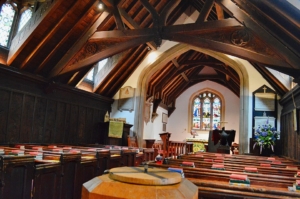
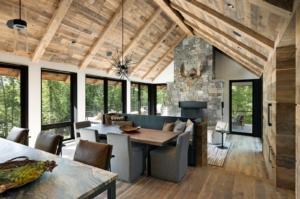
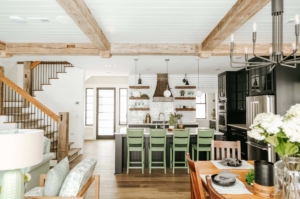
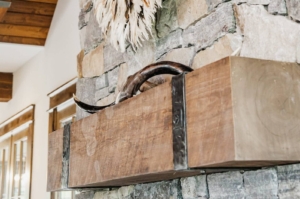
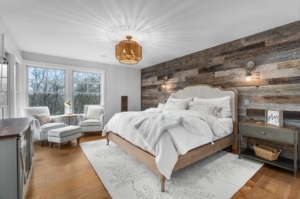
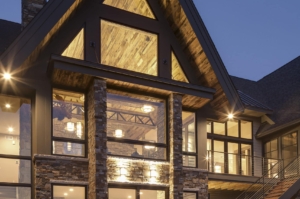
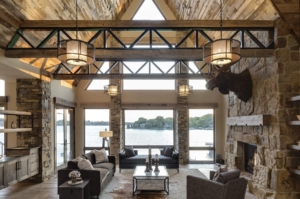

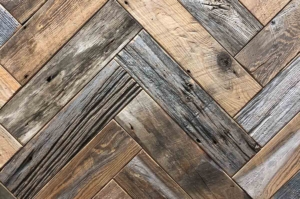
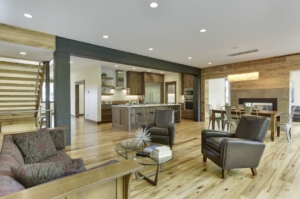
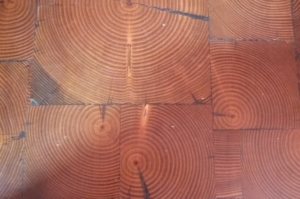

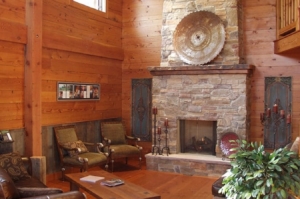

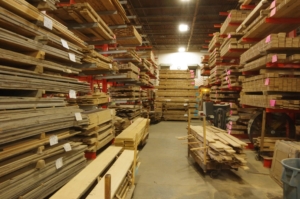
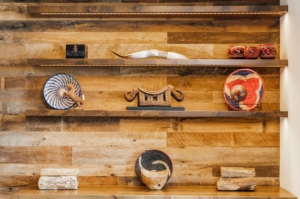

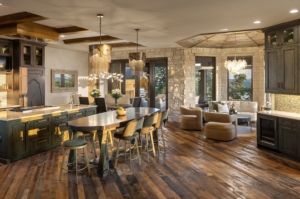
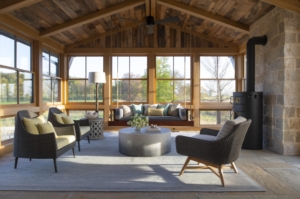
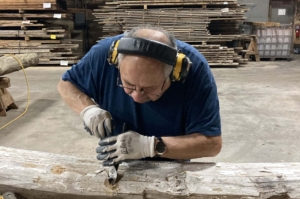
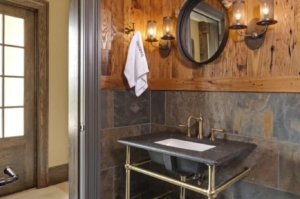

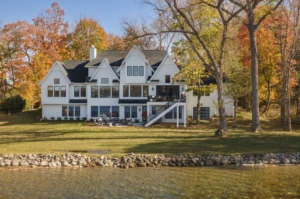
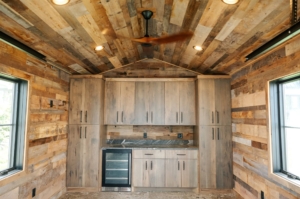
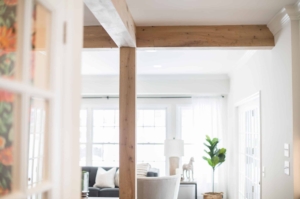
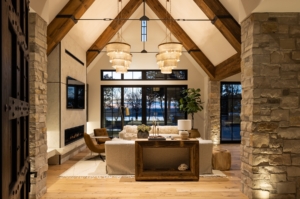
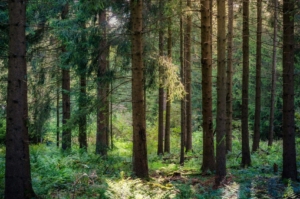

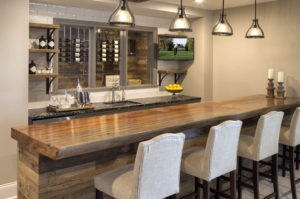
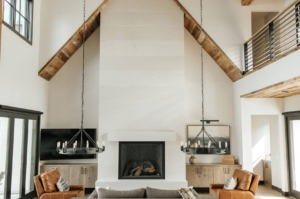
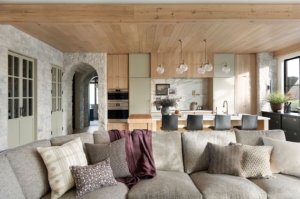
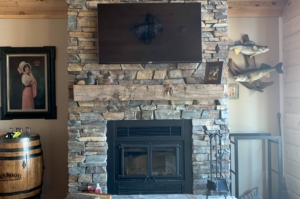






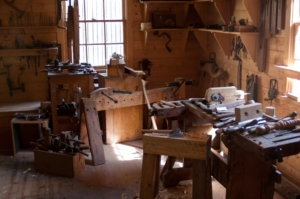

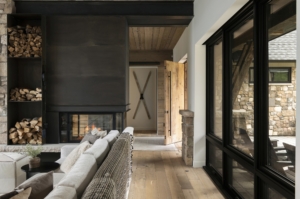

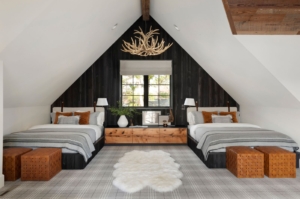
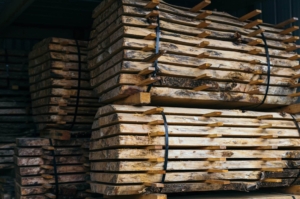

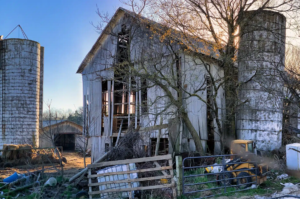
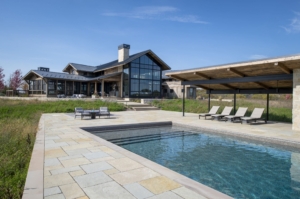



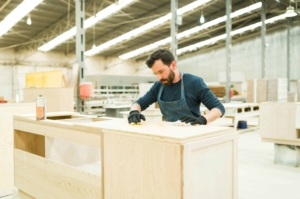
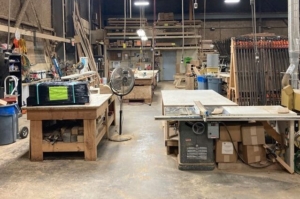



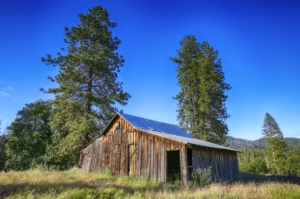
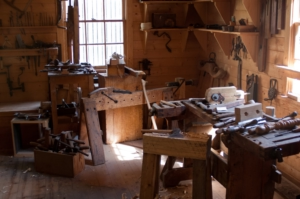


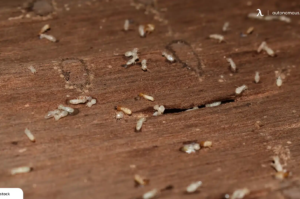




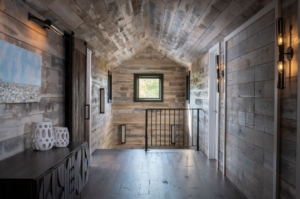






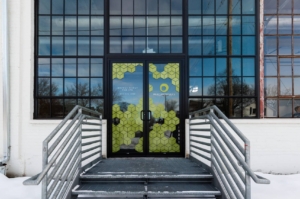



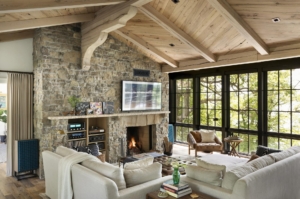
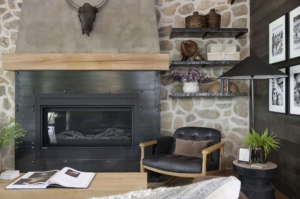

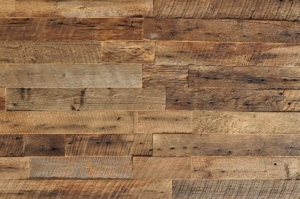


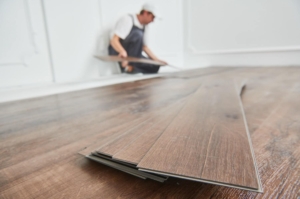
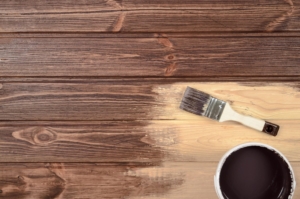
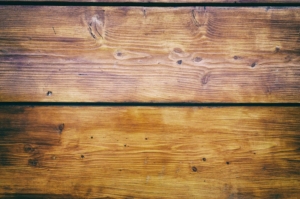
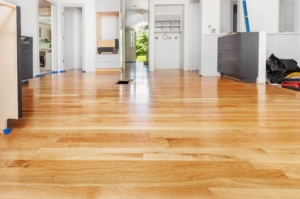
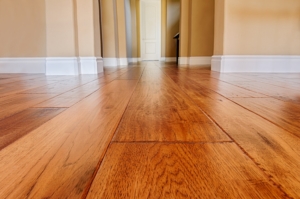

![What’s A Barnwood Ceiling Fan? [Picture Examples]](https://mrtimbers.com/wp-content/uploads/2022/06/barnwood-ceiling-fan-300x199.jpeg)

![8 Inspiring Projects with Reclaimed Wood Beams [Picture Examples]](https://mrtimbers.com/wp-content/uploads/2022/04/AdobeStock_244730952-scaled-300x199.jpeg)
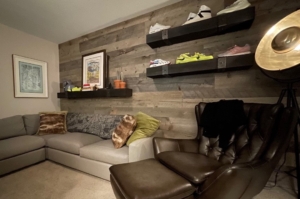



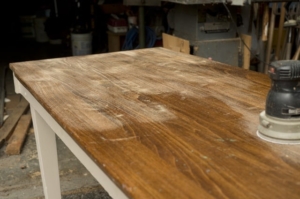


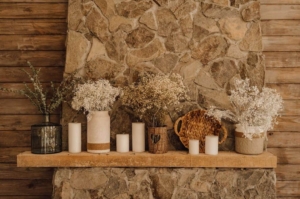
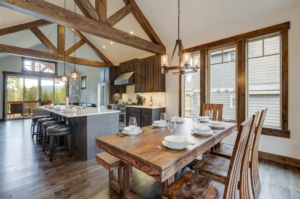
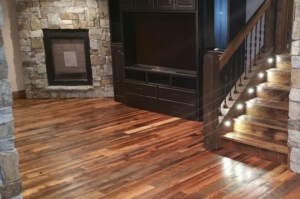

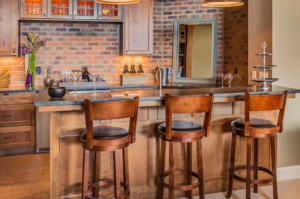








![Complete Guide To Reclaimed Wood Cabinets [Inspirational Pictures]](https://mrtimbers.com/wp-content/uploads/2021/07/reclaimed-wood-cabinet-e1635529394333-300x199.jpeg)


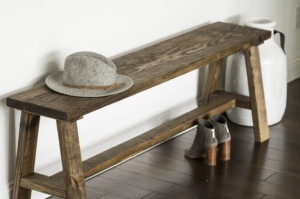

![6 Inspiring Reclaimed Wood Bookcase Designs [Picture Examples]](https://mrtimbers.com/wp-content/uploads/2021/06/reclaimed-wood-bookcase-e1635529825853-300x199.jpeg)



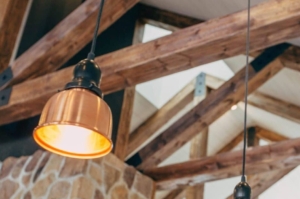
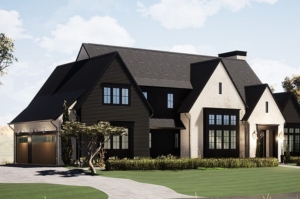
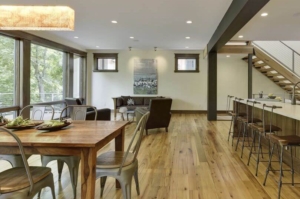
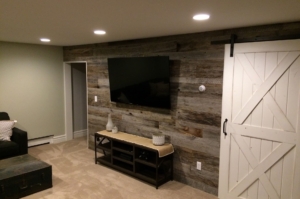
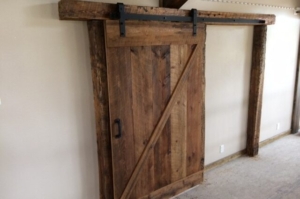
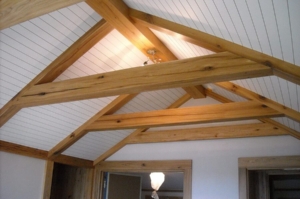



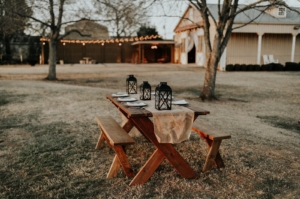

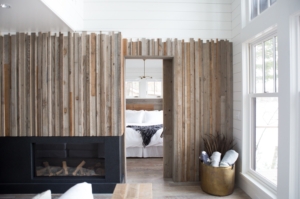
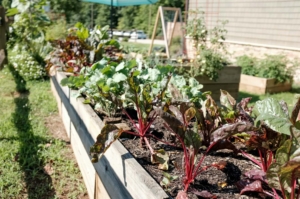

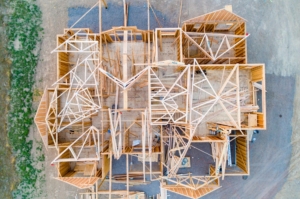
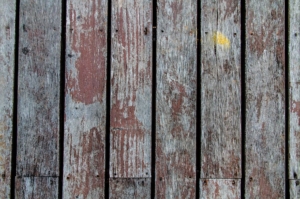
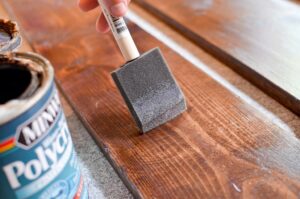
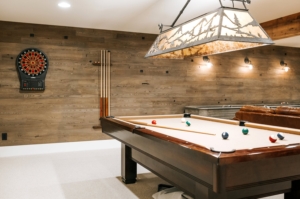
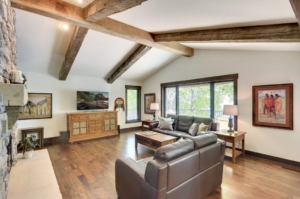
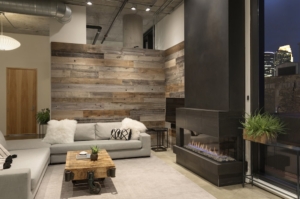

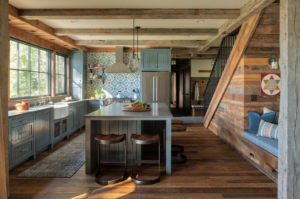
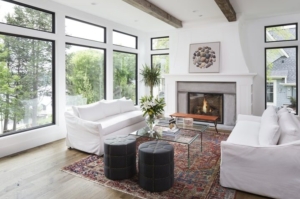


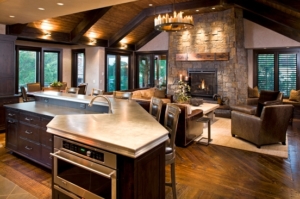
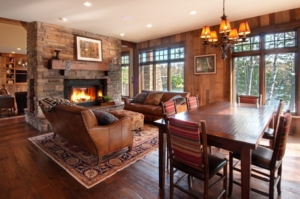

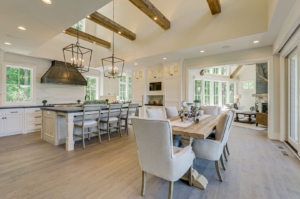

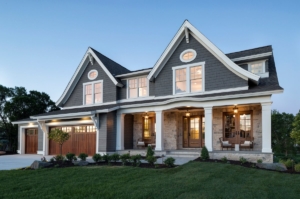

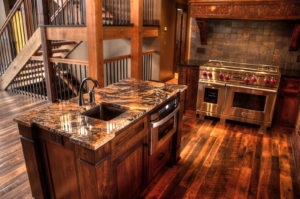









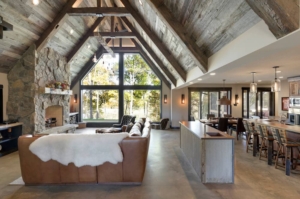
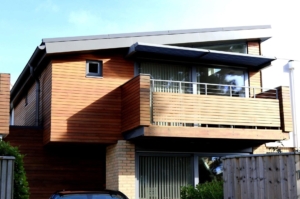
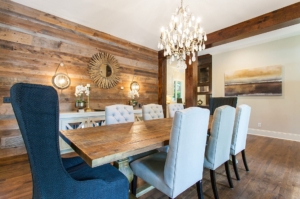

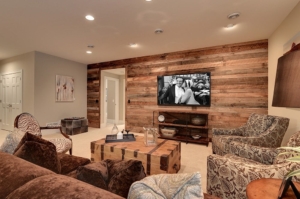
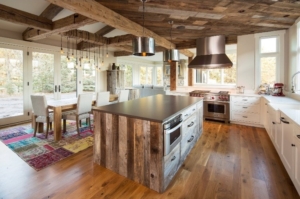
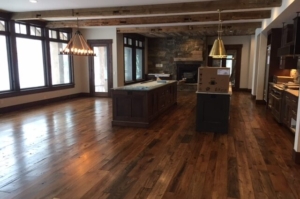
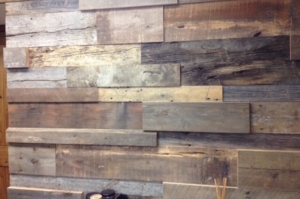

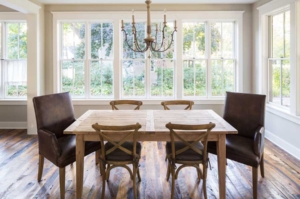
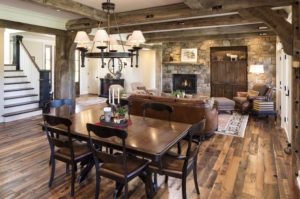
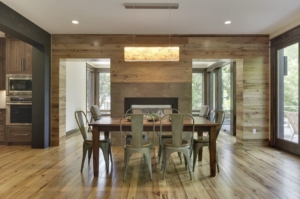



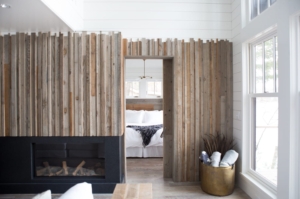
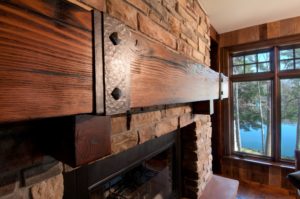

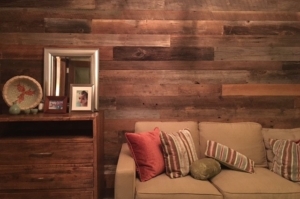

![Essential Facts About Timber Tile Paneling [Quick Guide]](https://mrtimbers.com/wp-content/uploads/2016/11/WAF_Paneling_--300x199.jpg)
